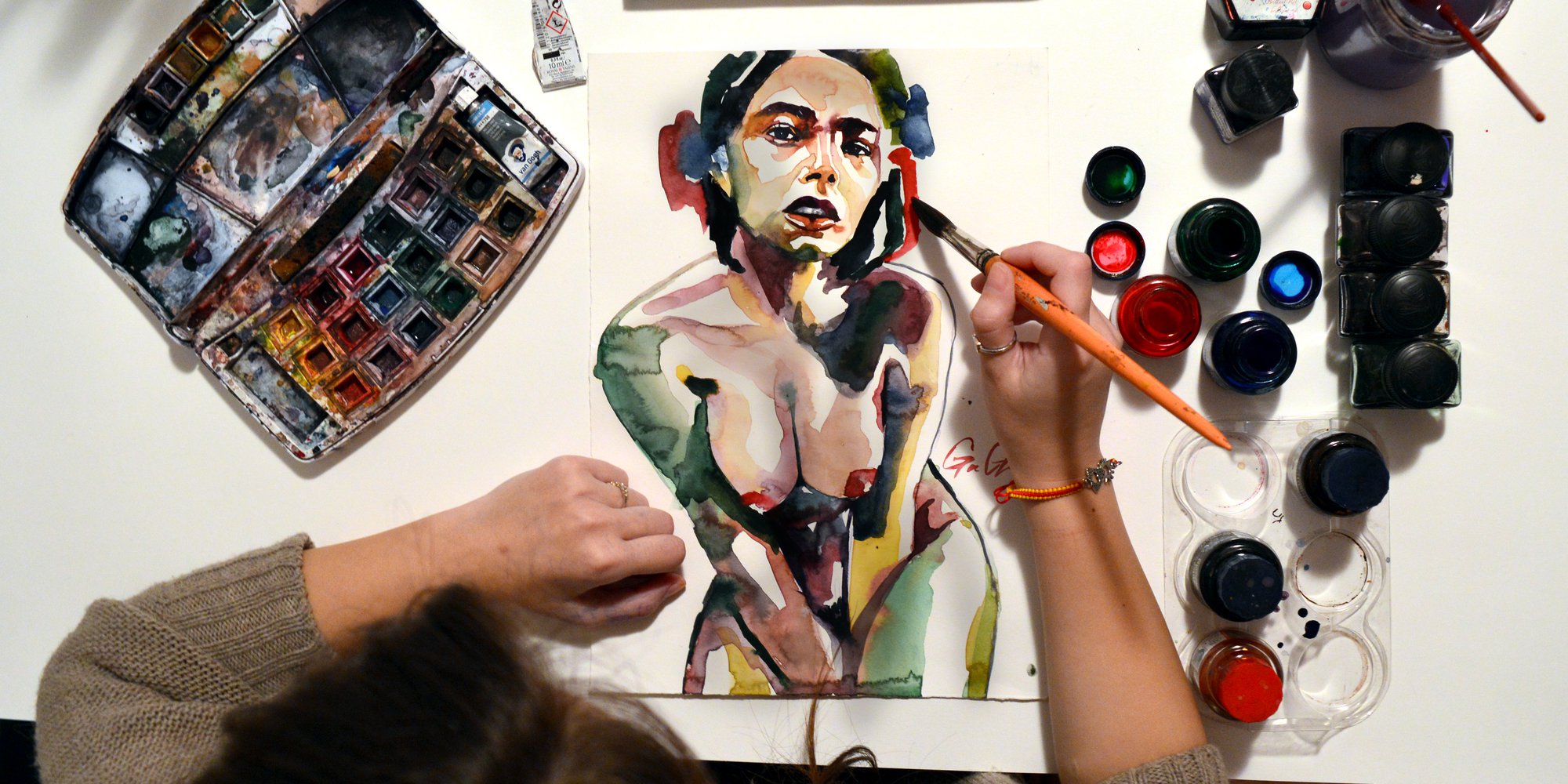Now that you’re an expert on nude art history (and if you’re not yet, get up to speed here), it’s time to tackle the art vs. porn debate.
Art is subjective, which makes the controversy of what’s art and what’s porn all the more difficult. Take Jeff Koons: he’s one of the richest, most well-known artists in the world, but his Made in Heaven series, by the standards of many, is classified as porn.
For some, a simple nude figure is enough to be porn, while others don’t consider artworks porn until there’s visible penetration. Read on to discover the reasons why.
History of erotic art
Nude art’s rebellious cousin, erotic art, holds a more extensive role in art history than you may think. Erotic art has existed since cave drawings, but the more ‘modern’ notion began with subtle hints during the Renaissance and with the rise of the female nude. That is, it’s likely that plenty of artworks you’ve admired from this period have erotic undertones. Gasp!
The artwork, Venus of Urbino, by Venetian artist, Titian, shows a nude reclining female in a bedroom, surrounded by symbolism of her obligation to produce children, such as a dog. And Michelangelo’s Tityus? This drawing is one of a series, which portrays a vulture tearing at his body, depicting his feeling of imprisonment due to the physical lust he felt for a heterosexual man.
I know what you’re thinking: this is nothing compared to the racy artworks you see today. However, Michelangelo’s and Titian’s artworks must be considered within the context they were created. Sexuality and what goes on behind closed doors were not discussed in the public sphere, especially homosexuality. As a result, these artworks which only alluded to sexually related topics were considered to be controversial at the time. It’s all about context.
Erotic art today
Today, erotic art is much more explicit than that of the Renaissance. While specific imagery, such as dogs, once established the eroticism of the work, artists today tend to ‘let it all hang out’.
Homosexual photographer and known member of the New York BDSM scene, Robert Mapplethorpe, was less subtle. Artists such as Mapplethorpe used their work as a means to explore their sexuality, which included themes of homosexuality and the BDSM lifestyle.
Further, many attribute the evolution of erotic art to the rise of feminist art in the 20th century. Through feminist ideas, female artists attempted to not only make nude and erotic art their own, but to reclaim the genre from the male gaze.
Erotic art has become a way for artists to challenge the traditional taboos (like those that existed in the Renaissance), shed light on issues of sexuality and poke fun at any preexisting prejudices or assumptions about sexuality.
The result? A subject that was once pushed under the rug as too inappropriate is now being paraded in front of us, allowing us to open-up dialogue and discuss sexuality publicly.
What’s the difference between art and porn?
When trying to differentiate the two, the first thing to think about is context. Had Mapplethorpe’s photographs existed back in the Renaissance, he would’ve been in big trouble. However, today we have a different and more modern take on what’s considered sexually explicit.
With this idea of context, it’s important to approach each artwork like you would any other and to question the wider meaning of the piece. Erotic art focuses on suggestion to communicate meaning, encouraging the viewer to invent the remainder of the story. If you are unable to establish a concept and can conclude that the purpose of the piece is solely for the pleasure of the viewer, it’s probably porn.
Without context, Keith Haring’s highly phallic mural may be considered quite risqué. However, this painting is one of many murals created by the artist, which advocates for the awareness and research of HIV and AIDS. Given the artist himself died of AIDS, the piece is all the more powerful.
Haring’s mural is quite suggestive, however, it requires more than a quick glance to decipher its meaning. This is never true for porn, which leaves no room for question. In simple terms, to determine if a piece of art is porn, you must first approach it as a work of art.
Italian painter, Amedeo Modligliani’s Nu Couche, depicts a reclining nude woman, fully exposed. It was the subject of much controversy at the time of its creation in the early 20th century and was removed from public view. However, after breaking auction records in 2015, Nu Couche was plastered on newspapers all across the world. Interestingly though, the piece was censored. Given today’s cultures and attitude toward sexuality, why was this the case?
When it comes to art or porn, the issue of censorship is alive and well. At Artfinder, we do our best to refrain from censorship. We appreciate our artists' creativity and like to keep an open mind. However, we do also know that what’s appropriate is completely subjective. In essence, if the image is explicit and if there’s no story behind it, it’s porn.
On the art vs. porn debate, where do you stand?
Cover image via Ga Ga


